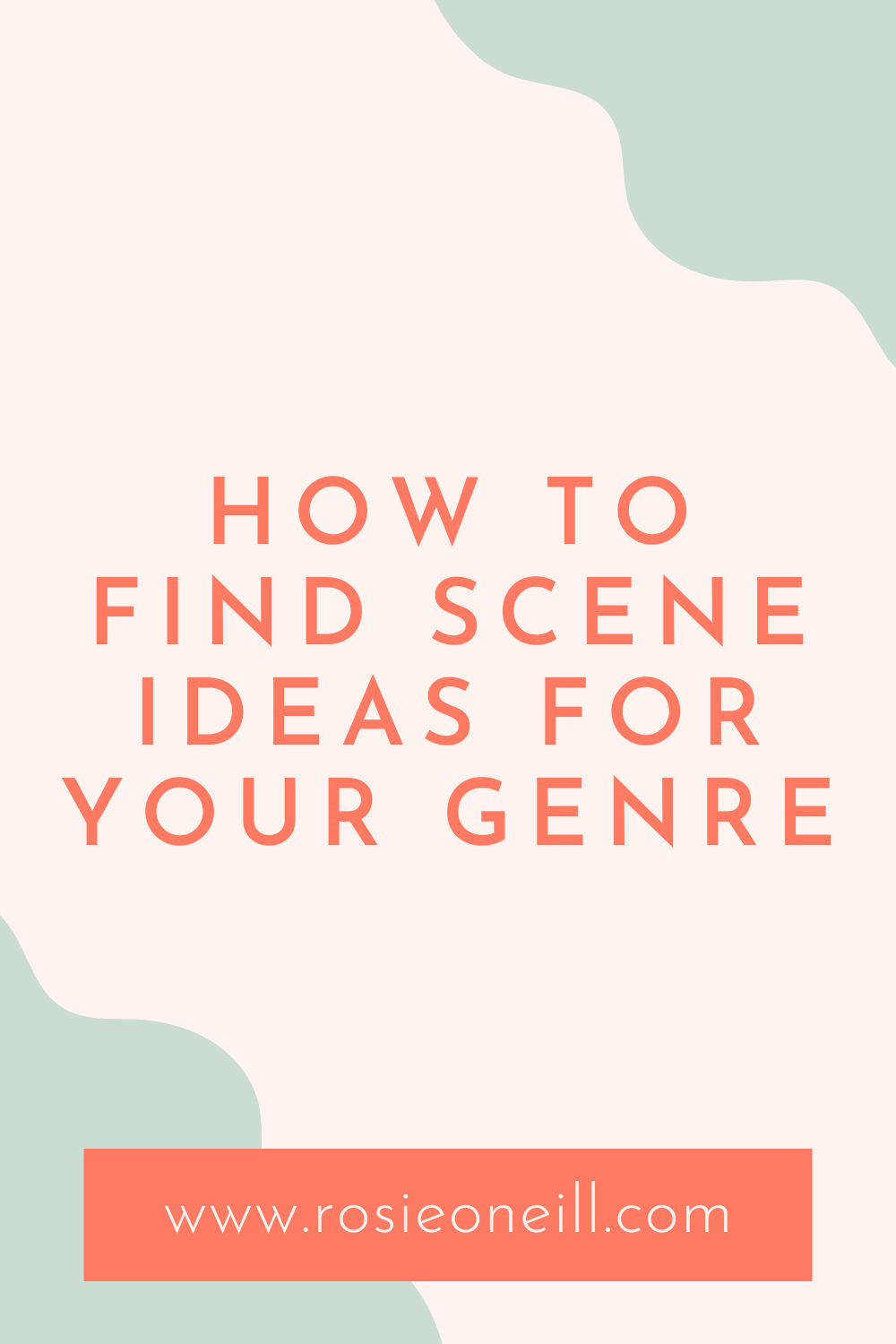Using genre to find scene ideas
Something I've been asked recently is how to actually come up with ideas for the scenes in your novel...
Lots of us start off with this tiny seed of an idea, and go on to flesh it out with some main characters and a basic plot, but once we have our premise, how do we fill in the blanks?
What actually happens in those chapters that come between your killer opening hook and your satisfying final sentence?
One way you can start to get those ideas flowing is by looking to your genre for prompts. By figuring out what genre you're writing and researching the popular tropes, cliches and plot points, you can start sparking off some ideas for scenes that you already know are going to be satisfying for your reader.
As readers we all pick up books and expect to encounter certain things along the way thanks to the clues that genre has given us. We expect that the heroine in a historical fiction might want to marry for love instead of wealth, and we expect there to be red-herrings and false leads in a mystery or detective novel.
You don't necessarily have to include every single cliche out there for your particular genre (I personally am getting a little sick of the 'chosen one' in fantasy fiction or the traditional love triangle conflict in romance), but understanding them and acknowledging them as you work on your outline is always worthwhile. After all, if you fail to hit any of those expected plot points or tropes for your genre, you run the risk of readers feeling a little unsatisfied after they finish reading.
This is something I cover in more depth in my workbook, Intuitive Plot, but to get you started, all you need to do is some quick research into your genre (you can use both books and films), exploring the different tropes associated with it. Try to analyse why those scenes pop up again and again in similar stories. Can you identify where you could use similar moments in your story? And can you adapt the situations to suit your characters?
If we look at the example of Christmas films (the super cheesy, romantic variety), here are the types of scenes and characters we might expect to find (and why they work well for this genre):
The best friend suggests potential romance
By including one or several side characters that act as a confidant for the main character, we're able to see how the main character might resist the idea of a love interest at first (but also how they might end up changing their mind for the right person). We really need this confidant character to allow us to get a look at how the main character processes things - usually it's a colleague or sister, but if the main character is in a new-to-them setting, it's often a conveniently aged local (who apparently doesn't have any other friends).
A Christmas wish
Here, the main character is encouraged to make a Christmas wish (or write a letter to Santa), often by an adorable child (their own, their sister's, or their potential love interest's). I love this trope because it's a really quick way to drop in the main character's goal, which can be neatly referenced towards the end of the story when it comes true.
A seasonally appropriate activity that involves hand-holding or arms wrapped round each other
This is a good one because it provides the perfect opportunity for your romantic leads to touch each other in a natural, non-romantic way, one that might lead to the characters viewing each other in a new light. Popular examples include: ice skating, gingerbread house making, archery, baking, wrapping presents, playing the piano, sledging.
Trimming the tree
This is a great way to include some depth and backstory (as people often have strong memories tied to their special decorations), and can be used to allow the romantic leads to bond over some shared experience (like an absent or recently deceased family member).
All hope is lost
Whether it's a misunderstanding, a secret being spilled, or my personal favourite - a character revealing their true identity - the climax of these stories often plays out as the ultimate catastrophe befalling our romantic leads. They argue or simply go separate ways, giving the audience the impression that they'll never be together, happily-ever-after style.
Two side characters pairing off romantically
This is always a popular idea for a subplot because it can be used to accentuate the warm-happy feelings, and also works for some light comic relief.
A happy ending
Just in time for Christmas eve/Christmas day, the main character has a sudden realisation, is won over by a romantic monologue, or gets a dose of Christmas spirit. This is really a must for a satisfying festive romance - the main characters have to be together at the end (or, at the very least, there has to be a very good reason why they’re better off apart).
So, if I was writing a Christmas-themed romance, I might start to generate some scene ideas by using these tropes and adapting them to my plot and characters.
The next step would be to start organising those ideas and adding scenes to bridge or link between, continuing to flesh out the outline until it looks like a full story. What do think, will you give it a go?
Pin for later:
HI, I'M ROSIE.
I help online business owners get in front of (and sell to!) the right people with engaging and purposeful copy that's filled with personality.
You can:
Join the email community for more like this post.
Hire me to write copy or content for your business.
Learn how to write more confidently and effectively for your business.
Need some help with your online presence but not sure what? Book a free consult, now!




